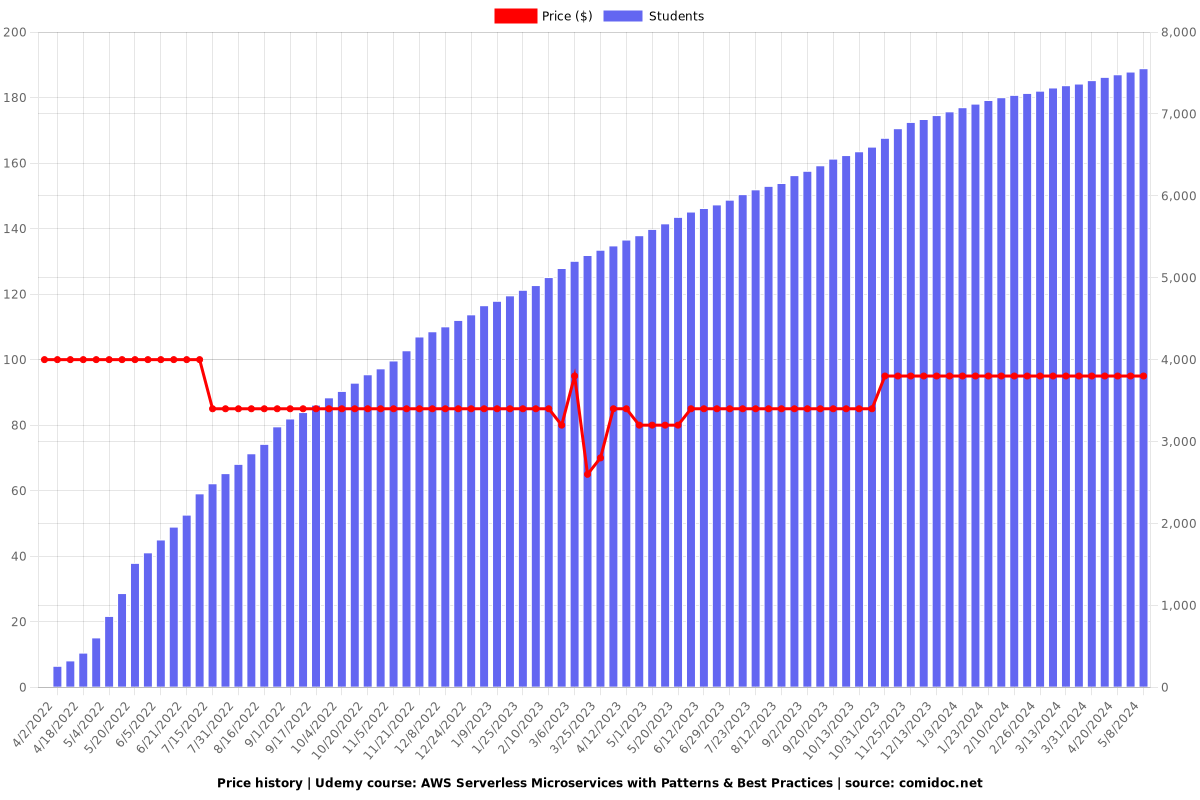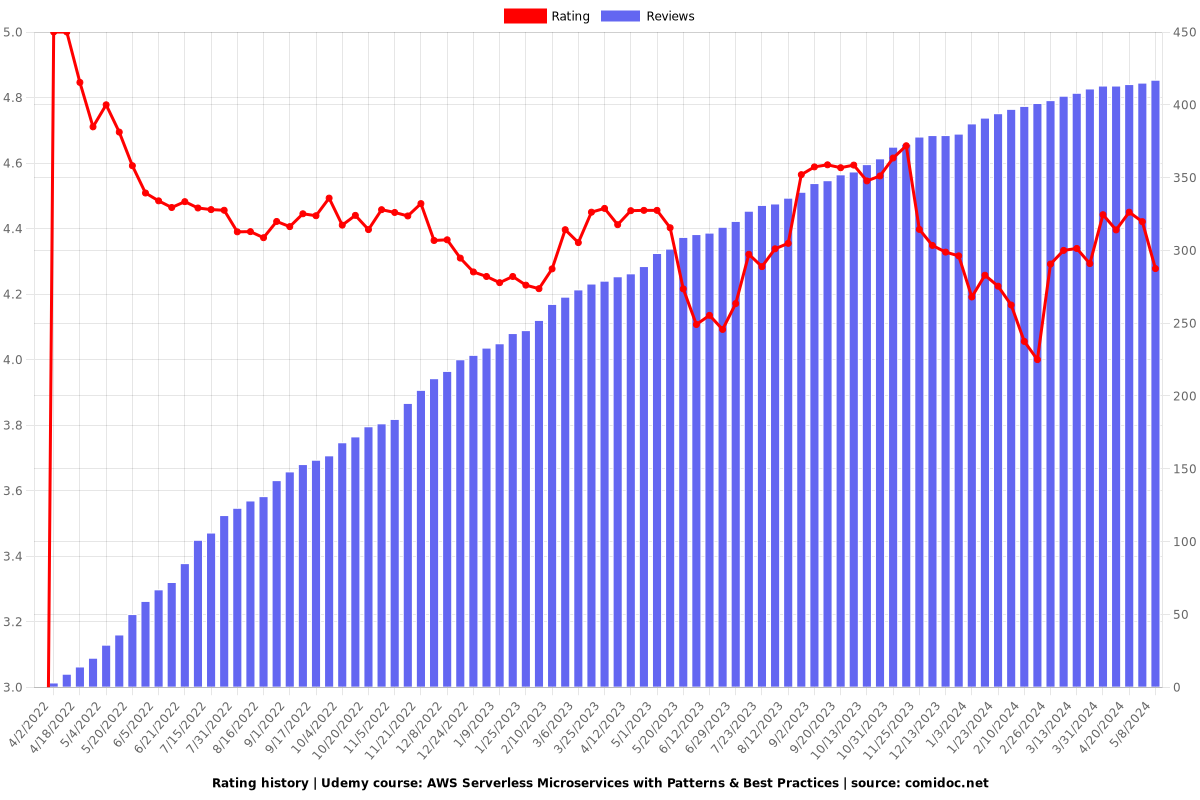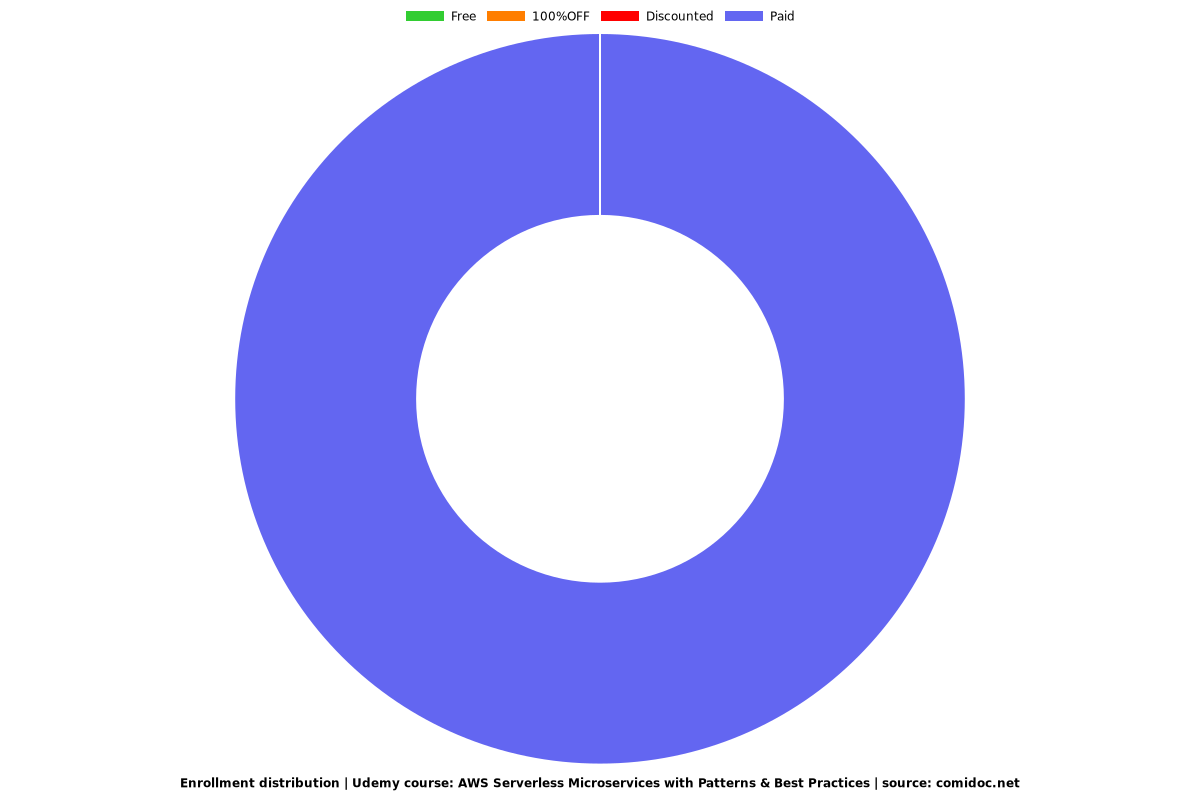AWS Serverless Microservices with Patterns & Best Practices
AWS Event-driven Serverless Microservices using AWS Lambda, API Gateway, EventBridge, SQS, DynamoDB and CDK for IaC

What you will learn
AWS Event-driven Serverless Microservices
AWS Lambda, AWS DynamoDB, AWS API Gateway, AWS EventBridge, AWS SQS and AWS CDK
REST API and CRUD endpoints with using AWS Lambda, API Gateway
Data persistence with using AWS DynamoDB
Decouple microservices with events using AWS EventBridge
Message Queues for cross-service communication using AWS SQS
Cloud stack development with IaC using AWS CloudFormation CDK
Serverless Design Patterns and Best Practices
Develop E-commerce Event-driven Microservices Application
RESTful Microservices with using AWS Lambda, Api Gateway and DynamoDb for performing CRUD operations
Event-Driven asynchronous Communication between Microservices using Amazon EventBridge
Serverless e-commerce application infrastructure development with using AWS CDK
AWS API Gateway -for- Restful API-Driven Development and Synchronous Event Sources
AWS EventBridge -for- Event-Driven asynchronous Communication between Microservices
AWS SQS -for- Decouple Microservices and processing events asynchronously using queues
Publish and create event to Serverless Eventbus which is AWS EventBridge
Create Rules and Target definitions for AWS EventBridge
Microservices send polling request and get event from the AWS SQS queue.
Synchronous communication with AWS Api Gateway for routing request from client applications to downstream microservices
Asynchronous communication with AWS Serverless Eventbus which is EventBridge for applying Event Driven asynchronous Communication patterns
Event Source mapping communication polling queue records from lambda services to AWS SQS-Simple Queue Service for Decouple Microservice
Devops best practices develop infrastructure as code Serverless Stacks with using AWS CDK - Cloud Development Kit
AWS Developer and AWS Solution Architecture Jobs
Prepare your AWS Certification with practical way
AWS Serverless + CDK Automation + Integration Patterns = AWSome Microservices!
Why take this course?
This course comes from a live GitHub aws-microservices repository which verified from community with 250+ stars and 100+ forks.
In this course, we will learn AWS Event-driven Serverless Microservices with using
AWS Lambda,
AWS DynamoDB,
AWS API Gateway,
AWS EventBridge,
AWS SQS which stands for Simple Queue Service,
AWS CDK stands for Cloud Development Kit for IaC - Infrastructure as Code tool and
AWS CloudWatch for monitoring.
This course will be 100% hands-on, and you will be developing a real-world application which includes;
REST API and CRUD endpoints with using (AWS Lambda, API Gateway)
Data persistence with using (AWS DynamoDB)
Decouple microservices with events using (AWS EventBridge)
Message Queues for cross-service communication using (AWS SQS)
Cloud stack development with IaC using (AWS CloudFormation CDK)
By the end of the course, you will learn how to develop reliable and scalable Serverless applications, following the microservices architecture. We will develop event-driven microservices with AWS Serverless services which comes with power of cloud high availability and high scalability by nature. Of course we will follow the Serverless Design Patterns and Best Practices when developing our e-commerce event-driven microservices application.
There is a couple of microservices which implemented e-commerce modules over Product, Basket and Ordering microservices. We will use AWS Lambda service as a microservices and use power of lambda functions. And this microservices databases will store NoSQL AWS DynamoDB databases.
And also we have followed communication patterns and best practices when designing Serverless microservice communications for synchronous and asynchronous communications with using AWS API Gateway, AWS EventBridge as a Eventbus and AWS SQS as a queue service. That means we design our architecture rely on asynchronous connections that gives us much more flexible and resilient application.
We will use
AWS API Gateway -for- Restful API-Driven Development and Synchronous Event Sources
AWS EventBridge -for- Event-Driven asynchronous Communication between Microservices
AWS SQS -for- Decouple Microservices and processing events asynchronously using queues
The course proposes a microservice oriented architecture implementation with AWS Serverless world using event-driven patterns and best practices. So the project will be the e-commerce application that will be totally Serverless components.
Let me try to introduce Serverless components one by one;
Api Gateway
This is entry point of our microservices.
API Gateway provides Restful API-Driven Development and Synchronous Event Sources.
Synchronous commands are request/response.
API Gateway is a synchronous event source and provides a Serverless API proxy to AWS Lambda.
API Gateway Redirects to CRUD request to internal microservices.
Product Lambda microservices which performs;
CRUD operations using DynamoDB table over the AWS API Gateway
This will cover product table operations fully Serverless in microservices architecture.
Synchronous requests will manage by AWS API Gateway and routing requests to Product Lambda Microservices that perform CRUD operations.
We will write Lambda functions with using AWS SDK for interacting other AWS resources for example in Product case we will interact with AWS Serverless DynamoDB to perform all crud operations.
Basket Lambda microservices which performs;
Add-Remove synchronous basket operations with using AWS API Gateway and DynamoDB
Again synchronous requests will manage by AWS API Gateway and routing requests to Basket Lambda Microservices that perform CRUD operations.
We will write Lambda functions with using AWS SDK for interacting other AWS resources. For example in Basket case we interact with AWS Serverless DynamoDB to perform all crud operations.
But also,
Basket microservice triggers to Event-driven use case which is the Checkout Basket.
When checkout basket, this will publish and create event to Serverless Eventbus which is AWS EventBridge.
So this asynchronous communication will held by Basket Lambda Microservice and AWS EventBridge and consumed by Ordering microservices over the AWS SQS.
AWS Event Bridge
So asynchronous communication held by AWS Serverless Eventbus service which is AWS EventBridge.
We will create Rules and Target definitions for AWS EventBridge from Basket Lambda microservices.
That means we will develop Basket Lambda Microservices when publishing checkout message to AWS EventBridge with using AWS SDK for development purpose.
AWS SQS and Ordering Lambda microservices
So after publishing checkout event to the EventBridge, this event will consume by Ordering part.
EventBridge send to event to AWS SQS in order to gain power of AWS queue.
After that Ordering lambda microservice will consume this event with polling.
That means we will use event source mapping communication type here when consuming events, ordering lambda microservices send polling request and get event from the AWS queue.
After consuming the event from the AWS queue, Ordering lambda microservices process the event with creating order record into its DynamoDB table.
Ordering lambda microservices perform all these operations with developing lambda functions with using AWS SDK.
We have 3 communication types;
Synchronous communication with AWS API Gateway for routing request from client applications to downstream microservices
Asynchronous communication with AWS Serverless Eventbus which is EventBridge for applying Event Driven asynchronous Communication patterns.
And lastly we have Event Source mapping communication when polling queue records from lambda services to AWS SQS-Simple Queue Service for Decouple Microservice and processing events asynchronously.
During the course we will follow these Microservice communication types with Lambda invocations, and develop our sections following these arrows.
IaC Serverless Stacks with AWS CDK - Cloud Development Kit
Will follow Devops best practices when coding infrastructure. The whole project, we will develop infrastructure as code Serverless Stacks with using AWS CDK - Cloud Development Kit.
We will use AWS CDK for IaC Serverless Stacks developments that we will develop and provision all services step by step with together.
AWS Developer and AWS Solution Architecture Jobs
This course prepares to you real AWS Developer and AWS Solution Architecture jobs, which's offers to you 3 figure salaries.
Because we are going to develop a real-world Serverless application which is already used and developed by lots of companies in the world.
Prepare your AWS Certification with Practical Way
AWS Certified Developer Associate
AWS Certified Solutions Architect Associate
Don't memorize all topics, feel and develop by hands-on, dirty your hands by this way you can achieve to onboard your target AWS jobs. This course will help you to prepare AWS Developer and Solutions Architect Associate certifications both theoretical and mostly practical way with developing Serverless e-commerce applications.
AWS Serverless + CDK Automation + Integration Patterns = AWSome!
This will be the manifesto of our course. We will follow these manifesto every place of our course and the Serverless e-commerce application.
Integration Patterns that we will follow Queue-chaning, Publish-Subscribe and Fan-out design patterns during the course when developing our serverless e-commerce application.
By the end of this course, you'll learn how to design and developing AWS Event-driven microservices with using Serverless patterns and best practices.
This course will be 100% hands-on, and we will be develop all infrastructure and microservice codes with together and step by step.
Reviews
Charts
Price

Rating

Enrollment distribution
